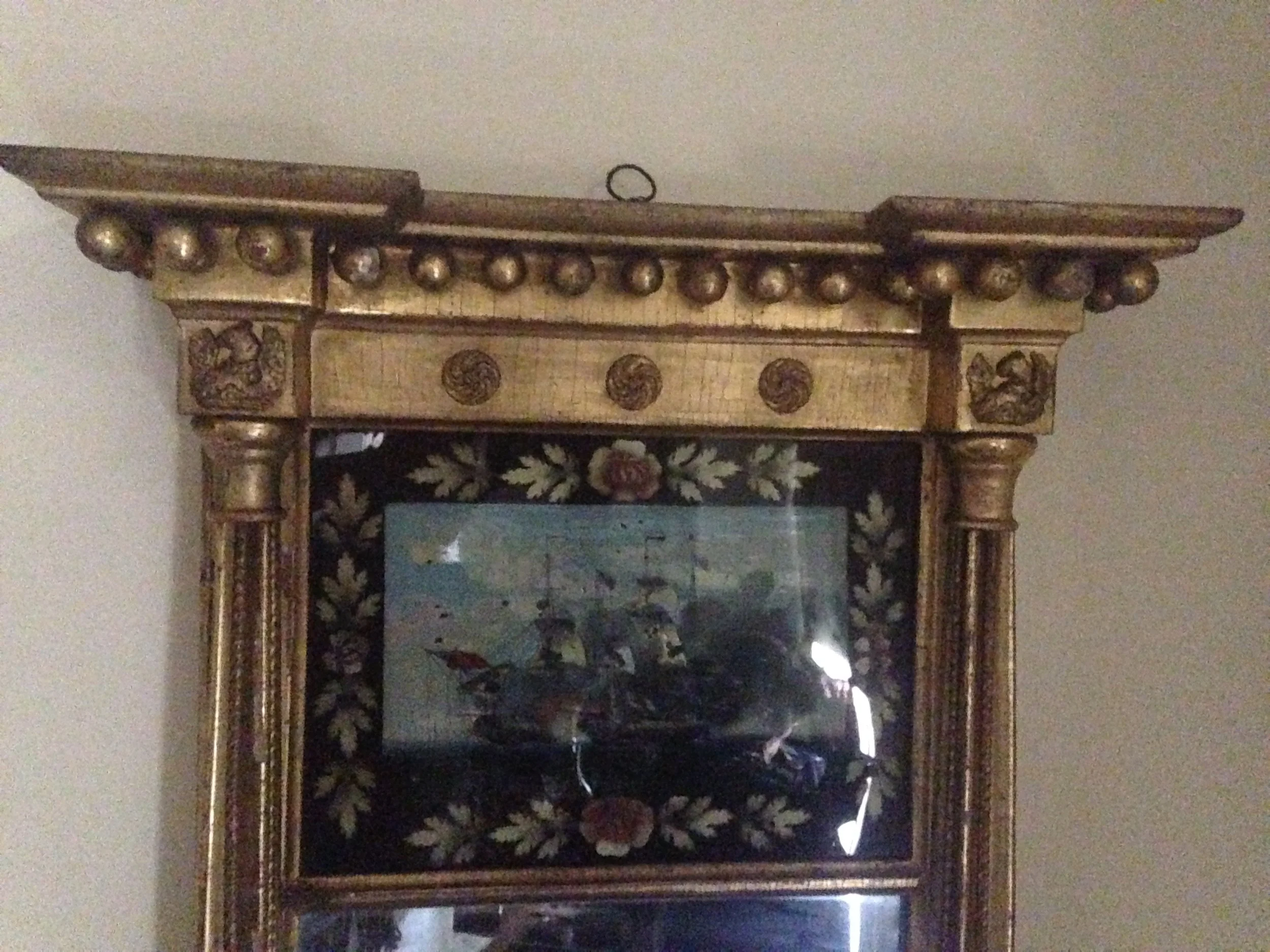Mirrors seemed to captivate Robbins Hunter as his collection has many. One of the favorites at the museum today is this Federal example made c. 1820. Called a tabernacle mirror by some, by others a pier mirror, its wooden frame is covered with gesso and gilded. The top panel is eglomise, or reverse painted on glass, a technique attributed to China. The actual mirror frame would have been made somewhere on the East Coast of America.
The mirror tells the story of a naval battle between an American and a British naval battle. No original labels, however, confirm the precise ship or battle. We know that Granville sent a company of men to fight at Lake Erie. Among them was George Avery, older brother of Alfred (who built the Avery-Downer House). Alfred, only 15 at the time, began a career as a drover of pigs and other livestock to sell to the troops. Probably because of Granville’s and the Avery family’s involvement in the War of 1812, we have interpreted the scene as Commodore Perry’s Victory at Lake Erie.
On September 10, 1813, an American fleet commanded by Commodore Oliver Hazard Perry defeated the British fleet in Lake Erie, just off Put-in-Bay. It was much celebrated as the victory put Americans in control of Lake Erie and much of the Northwest Territory. It marked the first time an entire British fleet was captured.
At daybreak on that long ago morning, Perry’s lookout sighted the British fleet of six vessels. They were under the command of Captain Robert H. Barclay. As the battle began, the wind, in front of Perry’s fleet of nine vessels, shifted to their backs and made it easier to approach the enemy. Perry’s plan was for his two ships, the Lawrence and the Niagara, to engage the two largest British ships, the Detroit and the Queen Charlotte. His smaller gunboats would take on the smaller British ships.
At noon, the battle began. Perry, aboard the Lawrence, engaged the enemy. The ship was badly damaged to the point of being disabled. Four of every five men aboard were either killed or injured, but Perry escaped and transferred to the Niagara which had remained out of range of the enemy guns. With the crew of the Niagara, he challenged both the Queen Charlotte and the Detroit.
Captain Barclay was severely wounded. The riggings of the two British ships became entangled. Perry raked the ships with his heavy guns until the British lowered their flag in surrender. Americans suffered 27 killed and 96 wounded. British casualties included 41 killed and 92 wounded. Soon after the battle, Perry wrote his famous note to the US commander in the region, William Henry Harrison, “We have met the enemy and they are ours: two ships, two brigs, one schooner, and one sloop.”
Stop by for a tour of the Avery- Downer House to learn more stories about the people who lived here and interesting items in the collection.


